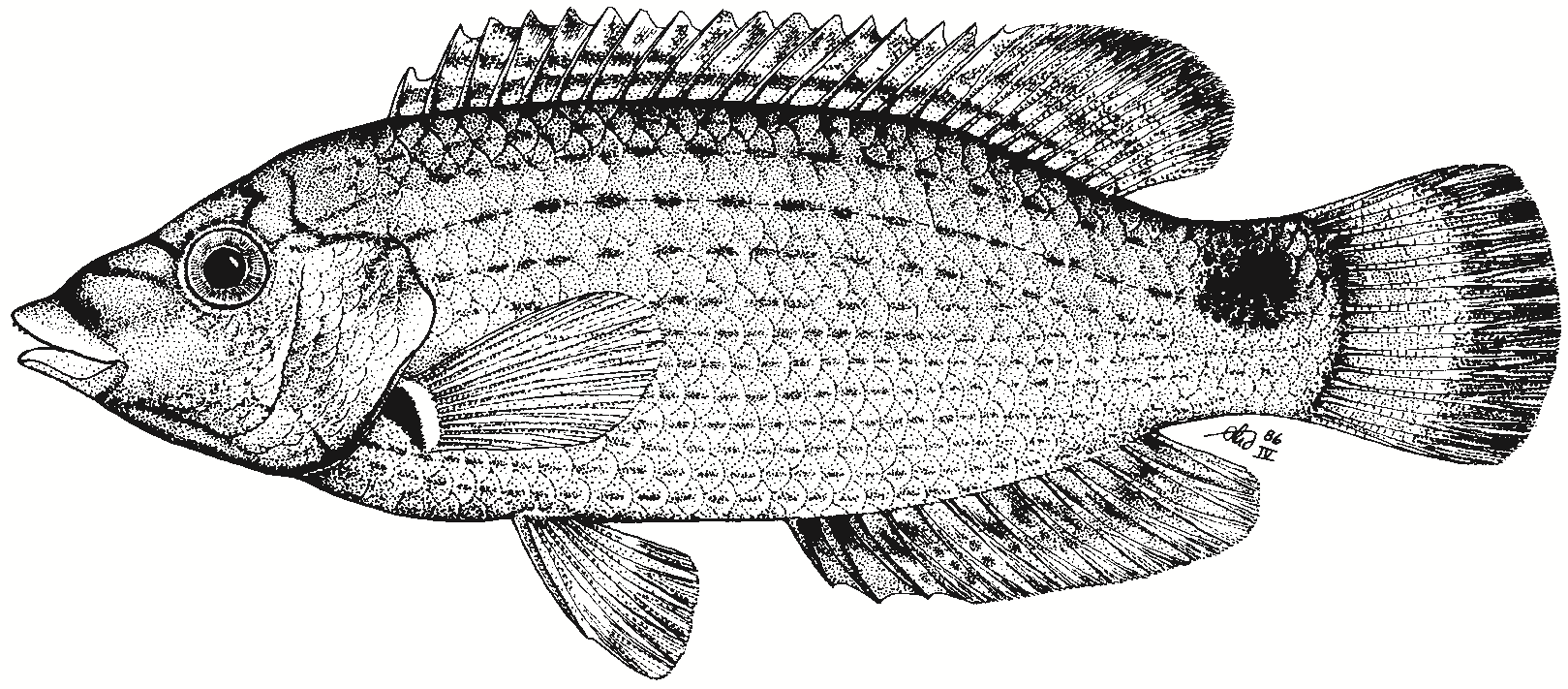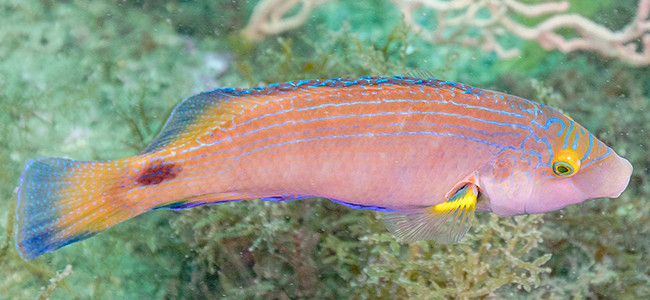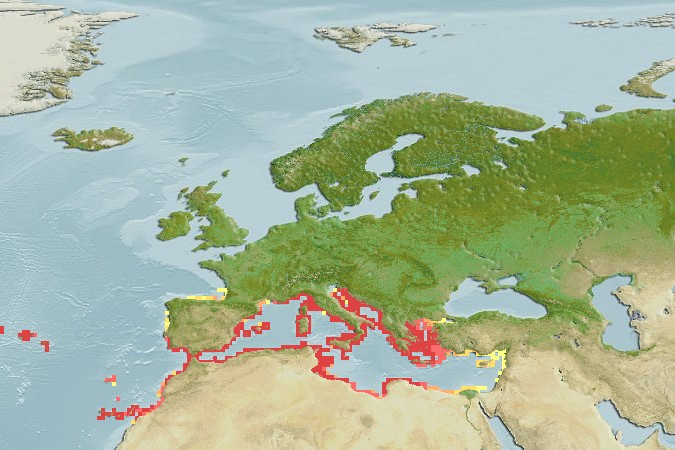Symphodus mediterraneus, commonly known as the Mediterranean wrasse or Mediterranean green wrasse, is a marine fish belonging to the family Labridae. Its scientific name derives from the Greek ‘symphodus‘, meaning ‘union of teeth‘, referring to the arrangement of its teeth, and ‘mediterraneus’, indicating its predominant geographic distribution in the Mediterranean Sea. Besides being found in the Mediterranean, it is also distributed in the eastern Atlantic, from the coasts of Portugal to Morocco, and in some areas of the Black Sea. This fish prefers to inhabit shallow coastal zones between 1 and 50 meters deep, in rocky bottoms, Posidonia oceanica seagrass beds, or among algae.

Symphodus mediterraneus is a small-sized fish, typically measuring between 10 and 15 cm, although some specimens may reach up to 18 cm. Its body is elongated and laterally compressed, with very variable coloration depending on age, sex, and reproductive status. Males tend to have more intense colors, showing reddish, brown, greenish tones, and blue or greenish spots on the sides. Females and juveniles generally have a duller coloration, predominantly greenish or brown, with irregular dark spots. A distinctive feature of this species is the dark spot at the base of the pectoral fin. Symphodus mediterraneus can be confused with other species in the genus Symphodus, such as Symphodus roissali or Symphodus tinca, but it differs by its smaller size and the specific coloration of males during the breeding season, as well as the location and shape of body spots.
Regarding its diet, Symphodus mediterraneus is carnivorous, feeding mainly on small benthic invertebrates. Its diet includes crustaceans, molluscs, bristle worms, and small echinoderms found while foraging among rocks, algae, and seagrass beds. It is a very active and opportunistic fish that uses its small mouth to capture prey in crevices and gaps of the seabed. Its varied diet and ability to adapt to different food sources allow it to thrive across a wide range of marine habitats.
Reproduction of Symphodus mediterraneus takes place in spring and summer. This species is oviparous and exhibits complex reproductive behavior. During the breeding season, males build nests with algae and other available materials, placing them among rocks or in underwater meadows. Once the nest is built, males court females to lay their eggs there. After spawning, males protect and fan the eggs until they hatch, aggressively defending their nests from predators and rival males.
An interesting fact about Symphodus mediterraneus is that, besides its changing coloration, it shows cleaning behavior: some individuals act as cleaners, removing parasites from other fish, a mutualistic interaction within the marine ecosystem. This makes it an important fish in the dynamics of marine communities, helping to maintain the health of other organisms around it.
Photos:


 from
from